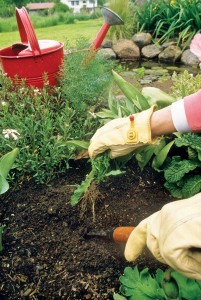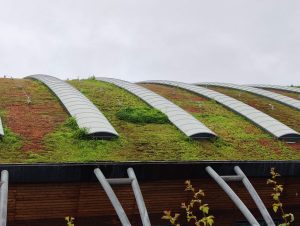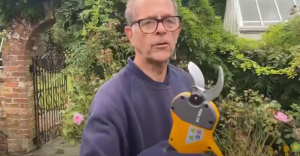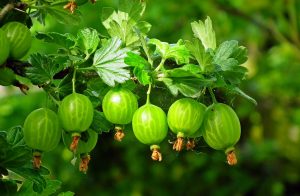
Weed control in horticulture generally falls into two main categories:
- Cultural and mechanical methods
- Chemical methods
Prior to controlling any weed it is important to establish whether it is an annual or perennial, as this will influence the control measure.
Annual weeds
It is important to prevent annual weeds from producing seed as the large numbers of seeds may germinate for years to come.
Effective control of annual weed seedlings can be achieved by hoeing on a dry, sunny day as they will shrivel on the soil surface, and need not be cleared away. Larger weeds can also be treated in this way but it may be necessary to rake them off the soil surface.
A contact herbicide is sufficient for annual weeds.
Perennial weeds
Perennial weeds are more problematic as they can persist in the soil, re-establishing themselves from small portions of root or stem. Although they should also be prevented from going to seed it is the difficulty of ensuring that all parts of the plant are removed that is the main challenge.
Hand weeding is satisfactory for some perennial weeds such as Urtica diocia (perennial stinging nettle) and Taraxacum officinale (dandelion), but infestations of plants such as Convolvulus arvensis (bindweed) and Aegopodium podagraria (ground elder) may be made worse, as roots may be broken into several pieces, each piece capable of producing a new plant. Mechanical soil cultivation will spread root fragments, allowing these weeds to further establish themselves.
A translocated herbicide may be required for control of perennial weeds.
However, there are other methods of controlling problematic weeds:
Mulching
In early spring apply a mulch 10cm (4”) thick of weed-free, organic material such as leaf mould or processed bark to help prevent weed seeds germinating and to smother weed seedlings. Do not use partially decomposed garden compost or manure as they often contain weed seeds… unless you’re happy weeding this to!
Established perennial weeds may grow through the mulch but as they tend to root into the loose material they are easier to remove.
Organic gardeners use a technique called sheet mulching – this involves mulching an area with material such as carpet for a year or more to control perennial weeds.
Why not try weed mats
This woven plastic sheeting can be laid directly over the soil. It will prevent annual weeds from establishing and problem weeds such as Convolvulus arvensis (field bindweed) are both less likely to grow if the area is covered for at least two seasons. Cover the sheeting with bark chip mulch to improve its appearance. Weed mat is particularly useful in fruit and vegetable gardens. Slits can be made in the sheeting through which the crops can grow.
Better still, hand-weeding and hoeing
Hand-weeding, hoeing and forking are often the only practical ways of removing weeds in flower beds, the vegetable garden and small patches of ground where weed killers cannot be used safely without risk of harming nearby garden or crop plants.
Small patches of perennial weeds may be forked out but great care must be taken not to leave in the soil sections of rhizomes, roots, or bulbils that will grow again. Check a month or so later and remove any re-growth.
Hand-weed or hoe in dry weather, if possible, so that the weeds are easily loosened from the soil. In wet weather remove uprooted weeds from the site to prevent them from rooting back into the soil. Hoe only lightly around cultivated plants to prevent their surface roots from being damaged.
Mechanical weed control
Market gardeners often use rotary cultivators with hoeing or cultivating attachments for annual weed control between rows of vegetables but they may be unsuitable for perennial weeds, as they simply cut the rhizomes of weeds such as couch grass.
Back to chemical weed control
All chemicals used to control weeds are referred to as herbicides. They are usually formulated as liquids, wettable powders or granules, depending on the product and its application.
Herbicides are categorised into two main groups:
Total herbicides
Total herbicides will kill all plants they come in contact with. They must only be used where total weed control is required.
Selective herbicides
These are chemicals that have an ability to control certain groups of weeds e.g. broad-leaved weeds growing in turf, whilst at the same time leaving desired plants undamaged.
Mode of action of herbicides:
Contact
These products will kill the parts of the plant that they come into contact with. They are effective at controlling weak rooted annual weeds. However, perennial weeds with stronger root systems will re-grow.
Translocated
These products will be absorbed by the foliage and translocated to the weeds’ roots, killing all parts of the plants. As a result they are very effective at controlling perennial weeds.
Soil acting (residual)
These herbicides are applied directly onto the soil with the intention of preventing weeds from germinating. For this reason they are often referred to as pre-emergence herbicides.
They form a layer of chemical in the upper topsoil, above the established ornamental plants’ roots but to a sufficient depth to control weed growth.
If using pesticides take care to read the label and follow instructions to the letter to avoid contamination of yourself, others and importantly the environment.
Good luck and happy gardening!
For any gardening tips why not contact Tom Cole, Senior Horticultural Lecturer, Writtle College, Chelmsford, CM1 3RR by post (including a SAE) or by email at tom.cole@writtle.ac.uk








